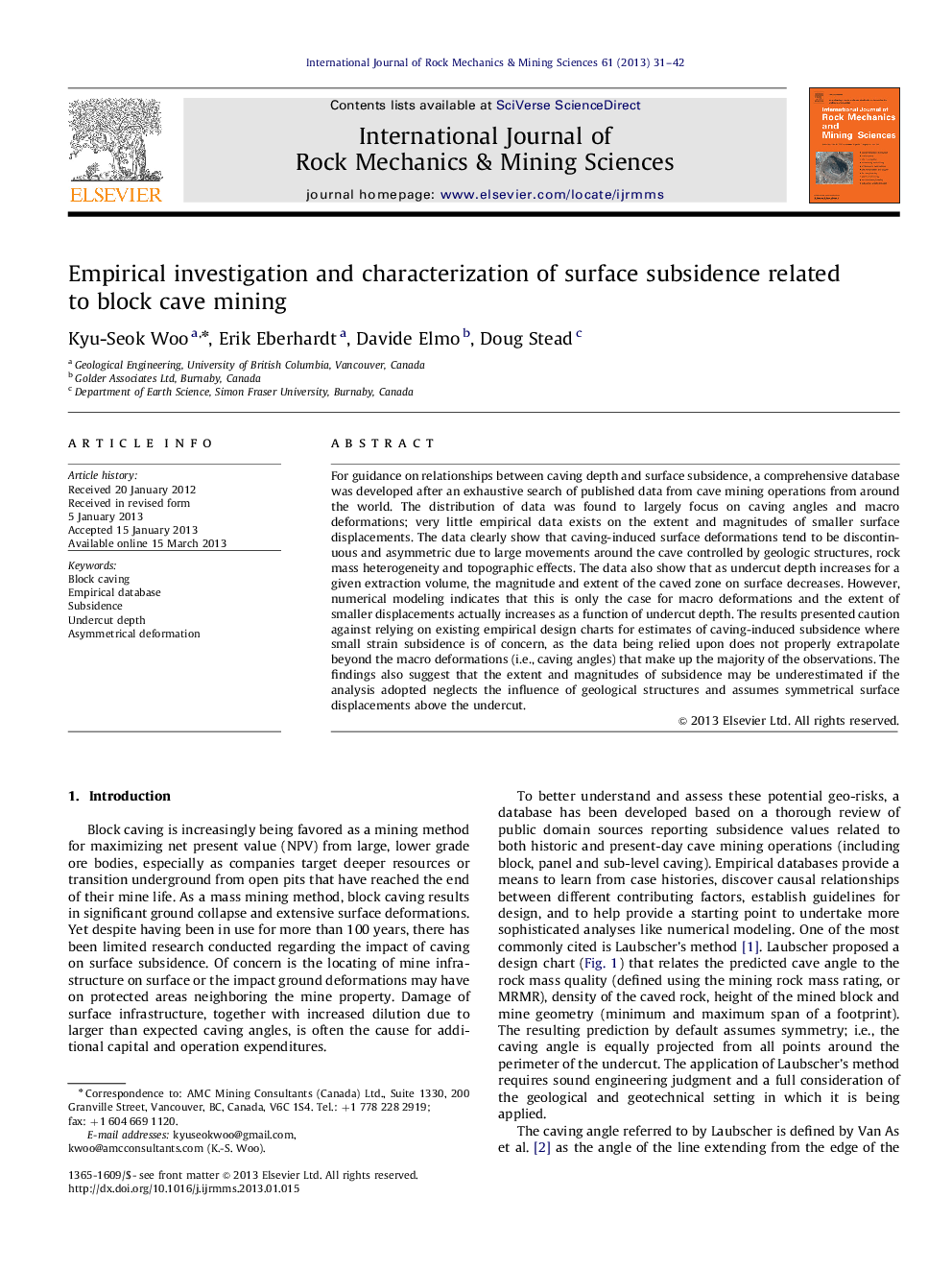| Article ID | Journal | Published Year | Pages | File Type |
|---|---|---|---|---|
| 809223 | International Journal of Rock Mechanics and Mining Sciences | 2013 | 12 Pages |
For guidance on relationships between caving depth and surface subsidence, a comprehensive database was developed after an exhaustive search of published data from cave mining operations from around the world. The distribution of data was found to largely focus on caving angles and macro deformations; very little empirical data exists on the extent and magnitudes of smaller surface displacements. The data clearly show that caving-induced surface deformations tend to be discontinuous and asymmetric due to large movements around the cave controlled by geologic structures, rock mass heterogeneity and topographic effects. The data also show that as undercut depth increases for a given extraction volume, the magnitude and extent of the caved zone on surface decreases. However, numerical modeling indicates that this is only the case for macro deformations and the extent of smaller displacements actually increases as a function of undercut depth. The results presented caution against relying on existing empirical design charts for estimates of caving-induced subsidence where small strain subsidence is of concern, as the data being relied upon does not properly extrapolate beyond the macro deformations (i.e., caving angles) that make up the majority of the observations. The findings also suggest that the extent and magnitudes of subsidence may be underestimated if the analysis adopted neglects the influence of geological structures and assumes symmetrical surface displacements above the undercut.
► Relations between caving depth and subsidence were analyzed by database and numerical modeling. ► Numerical modeling showed smaller displacements increase as a function of undercut depth. ► Caving-induced surface deformations were proved to be discontinuous and asymmetric. ► The second and third points above are not accounted for by existing empirical design charts. ► Caution was presented against relying on empirical design charts for subsidence estimation.
